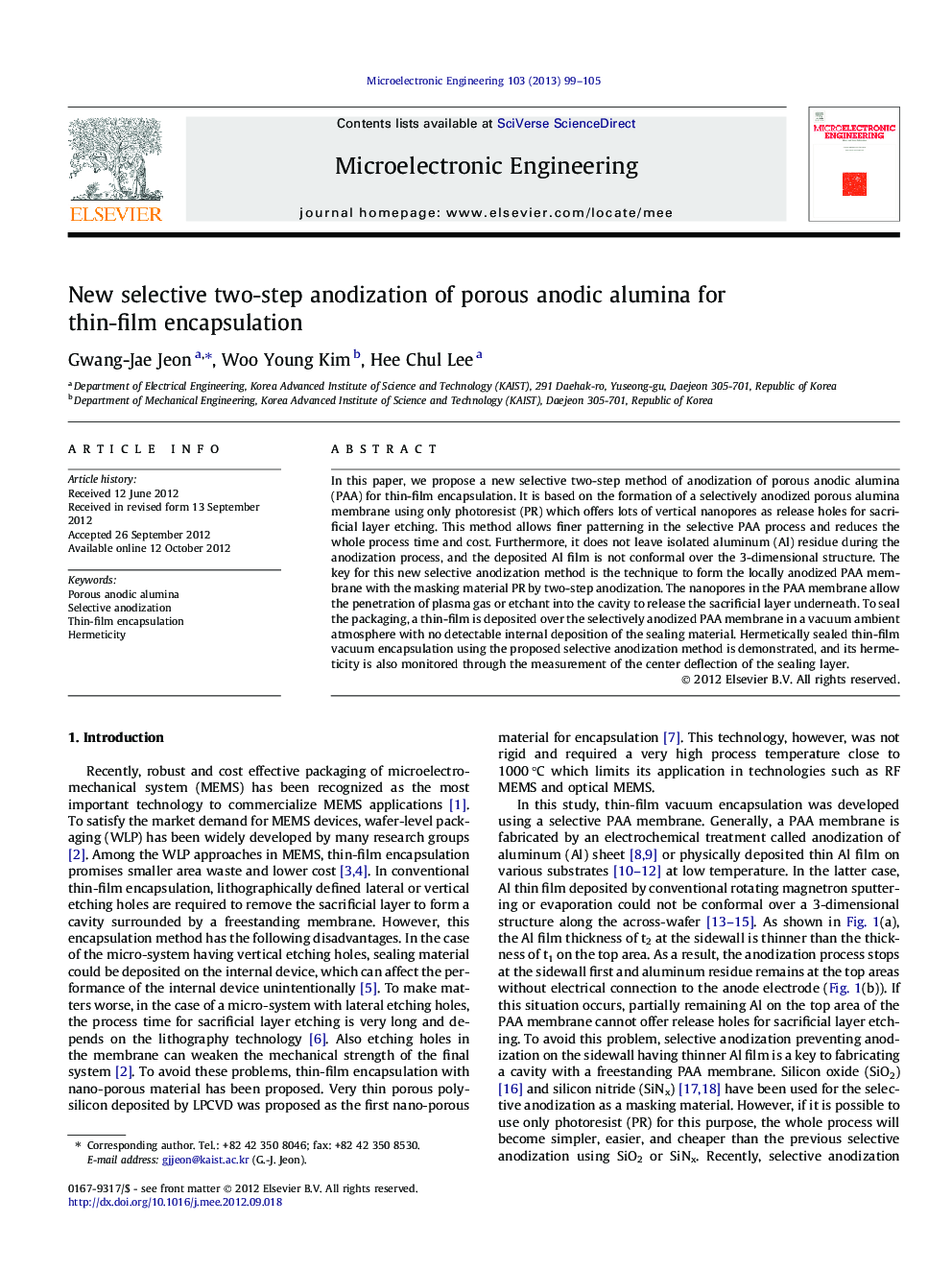| Article ID | Journal | Published Year | Pages | File Type |
|---|---|---|---|---|
| 542950 | Microelectronic Engineering | 2013 | 7 Pages |
In this paper, we propose a new selective two-step method of anodization of porous anodic alumina (PAA) for thin-film encapsulation. It is based on the formation of a selectively anodized porous alumina membrane using only photoresist (PR) which offers lots of vertical nanopores as release holes for sacrificial layer etching. This method allows finer patterning in the selective PAA process and reduces the whole process time and cost. Furthermore, it does not leave isolated aluminum (Al) residue during the anodization process, and the deposited Al film is not conformal over the 3-dimensional structure. The key for this new selective anodization method is the technique to form the locally anodized PAA membrane with the masking material PR by two-step anodization. The nanopores in the PAA membrane allow the penetration of plasma gas or etchant into the cavity to release the sacrificial layer underneath. To seal the packaging, a thin-film is deposited over the selectively anodized PAA membrane in a vacuum ambient atmosphere with no detectable internal deposition of the sealing material. Hermetically sealed thin-film vacuum encapsulation using the proposed selective anodization method is demonstrated, and its hermeticity is also monitored through the measurement of the center deflection of the sealing layer.
Graphical abstractFigure optionsDownload full-size imageDownload as PowerPoint slideHighlights► A new selective anodization method of porous anodic alumina is proposed. ► The key is the technique using photoresist as a mask layer by two-step anodization. ► It allows fine patterning with the high resolution in the selective PAA process. ► Thin-film vacuum encapsulation using a proposed method is demonstrated. ► Long-term hermeticity of the encapsulated packaging is verified.
